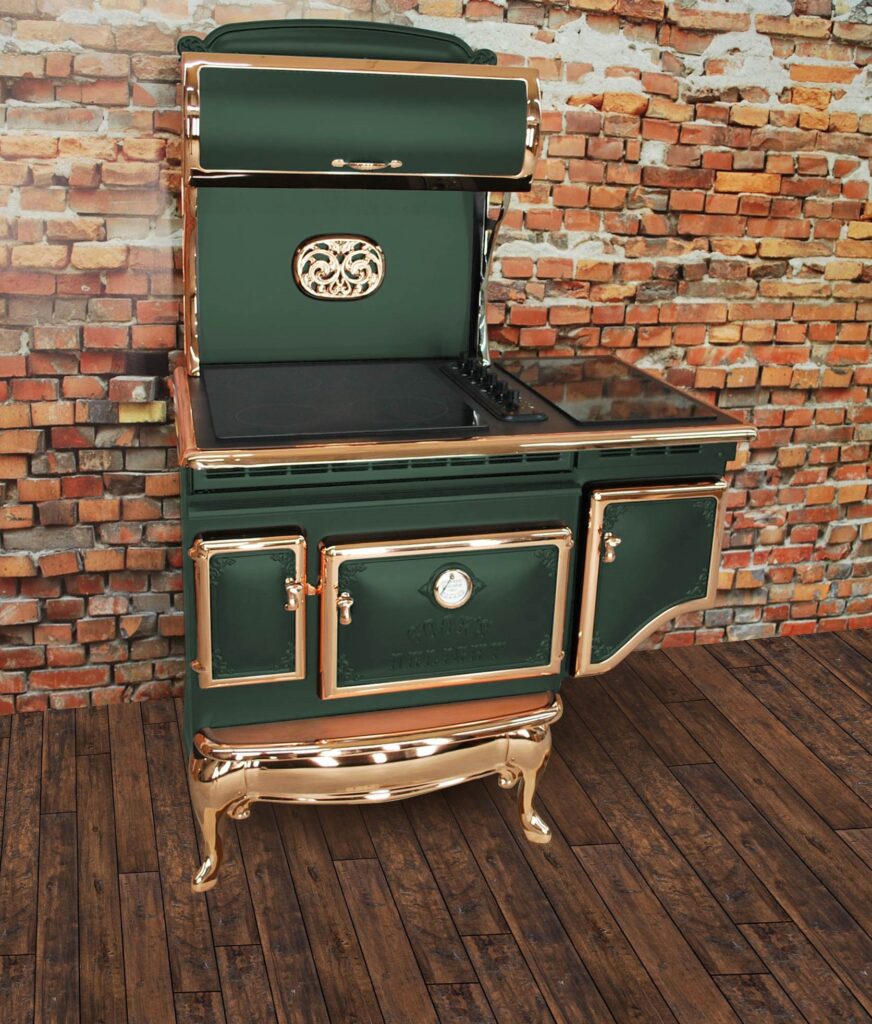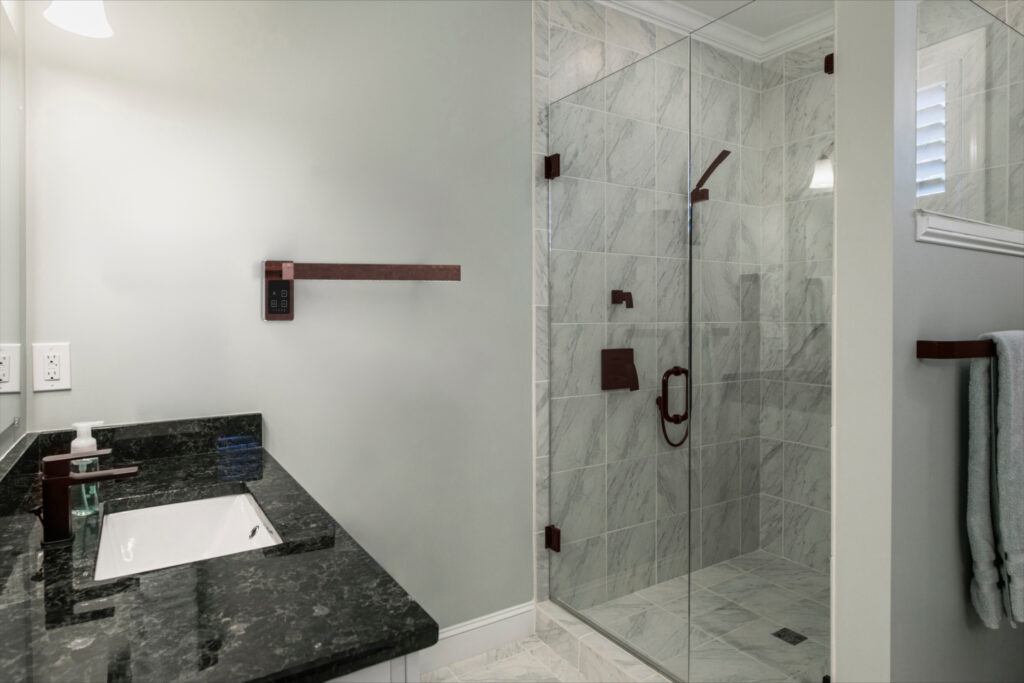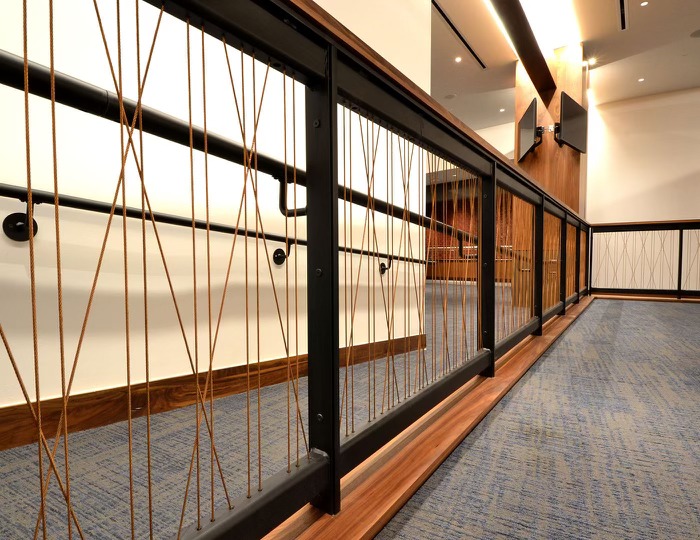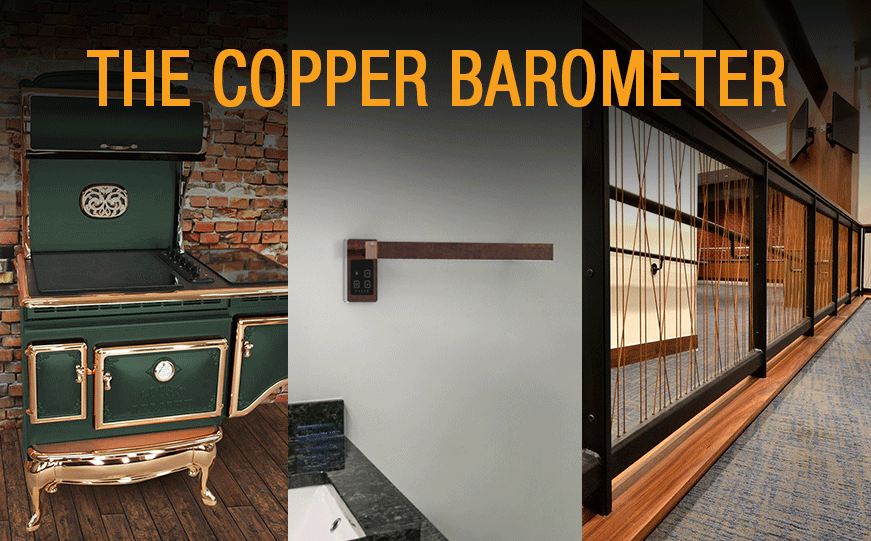High demand for copper in industry has long been associated with a strong economy. Is a vibrant copper design statement also an indicator of robust performance?
Copper, a favorite of plumbers and penny hoarders for centuries, has a reputation as a key economic indicator of the overall health of the economy. In fact, the warm, patina-prone metal has earned the moniker “Doctor Copper” for its prognosticating abilities.
Copper is widely used in numerous industries, such as infrastructure, construction and electronics. So, when the economy is robust and expanding, demand and price for the metal rise. Similarly, when the economy is softening, price and demand for copper fall, signaling a general downward direction of the overall economic landscape.
With residential and commercial construction enjoying a prolonged period of robust activity — and government infrastructure projects chugging along — it’s easy to understand that demand (and pricing) for copper is high… and many economists would point to this as a sign of a healthy economy.
True, the first week of August saw volatility in the stock market and a weaker-than-expected jobs report led to some recession jitters. But overall, the U.S. economy has been performing well — GDP has been the strongest among the top 20 global economies, post-pandemic. Homebuilders’ stocks are surging and earnings are strong. In Q1, sales of new homes were up 18 percent YOY among the 10 largest homebuilders. In July, stocks in the sector leapt 22 percent in 10 days on hopes that the Federal Reserve would be cutting interest rates sooner rather than later.
The Fed said after its July meeting that, “Recent indicators suggest that economic activity has continued to expand at a solid pace,” with unemployment ticking up but still low, and inflation still higher than desired but easing. As inflation makes “some further progress” toward the central bank’s 2 percent target, the Fed could be moving closer to reducing interest rates.
And the National Kitchen & Bath Association (NKBA)’s recent Kitchen & Bath Market Index (KBMI), a leading indicator of American K&B market performance, rose during the first quarter of 2024… another positive indication that the industry has held steady and is entering a period of growth. Some of the most significant signs of a recovery come from the manufacturing segment — which uses a lot of copper in appliance manufacturing — and which has led the post-pandemic recovery.
Finally, according to the Leading Indicator of Remodeling Activity (LIRA) from the Remodeling Futures Program at the Joint Center for Housing Studies of Harvard University, after a modest downturn, remodeling expenditures are expected to improve through the first half of 2025. “Economic uncertainty and continued weakness in home sales and the sale of building materials are keeping a lid on residential remodeling, although many drivers of spending are starting to firm up again,” said program director Carlos Martín. “After several years of frenzied activity during the pandemic, owners are now making upgrades and repairs to their homes at a steadier and more sustainable pace.”
Perhaps coincidentally, copper has also been rising as a design element in recent years — particularly in kitchens and baths — which have been seeing more unique metals in various colors and finishes on fixtures and hardware. All burnished metals create a warm atmosphere and are growing in prominence… owing to the connection to nature and organic themes in design.
Copper in Design
Copper has gained in popularity in the most recent NKBA Design Trend survey. In its 2023 forecast, published in late 2022… copper barely made an impression. It was cited by just 4 percent of respondents as a popular kitchen faucet color, when asked what colors would be strong over the next three years.
Just one year later, however, in the 2024 Design Trends report, 16 percent of those surveyed said copper would be popular… a four-fold increase. Moreover, gold and champagne bronze took the top spot at 50 percent, edging out stainless at 48 percent and black at 46 percent.
Oil-rubbed bronze — which falls into a similar palette as copper — still continues in popularity, cited by 17 percent for kitchen faucets in NKBA’s 2024 design survey… up from 12 percent in the 2023 report.
Perhaps because it isn’t as ubiquitous as a builders’ favorite — white shaker cabinets and stainless appliances — copper is sometimes looked upon as a unique and luxurious design element. And one thing many remodeling homeowners want today is individuality. Copper already scores well for its efficient functionality… and it’s different. It could just be time for a change.
“Copper retains heat well, so from a wellness standpoint as well as a luxury material, freestanding copper tubs make quite a statement,” said designer Elle H-Millard, CKD, CLIPP.
Copper is a natural element and patinas over time to a green tone, based on oxidation. This fits in with the heavy lean toward natural colors, especially greens, blues and browns, that is currently dominating home design trends. Consumers are gravitating toward modern warmth — an updated farmhouse look that ups the ante on sophisticated elegance. Copper scored in the middle of the pack for top kitchen sink colors in NKBA’s 2024 report, cited by 19 percent of respondents; it didn’t register at all in the 2023 survey.
“I strongly believe that trends reflect where we are in life and our feelings in the immediate moment,” said John K. Morgan, CEO of Indigo Strategic Holdings and Green Forest Cabinetry in Chesapeake, Va. “Austere trends reflect our inner feelings of needing to be simple, focused and in control of our spending. And when our trends tend to be more luxurious — like copper — well, that reflects our feelings of confidence, stability, and the desire to take risks in stretching our spending.”
With the return of greens, blues and other colors to kitchen design, options for adding metals and woods have opened up as well. And because copper patinas toward green, copper accents are a natural pairing. For instance, Elmira Stove Works, a maker of vintage-style appliances, has put its technical and aesthetic prowess on display with special-order custom color options, including copper, for its Northstar and Heritage lines.

“There is beauty in imperfection and charm and character to materials that age like fine wine,” added Millard, “and we are seeing this trend embraced more in design using raw material in products and pairing them with a strong visual counterpart to accent the natural aged beauty. For example, a modern fireplace may be surrounded by copper metals, or a copper faucet may be embraced by textured wood tile.”
In the bathroom, consumers are also opting for warm finishes like copper, citing its elegant, vintage appeal. In response, Amba, which specializes in heated towel warmers, has expanded its product array to include a wider range of warm-toned finishes.

Architectural designer Adam Gibson, CMKBD, founder of Adam Gibson Design in Carmel, Ind., said while copper sinks were popular for decades in country kitchens, the metal’s popularity likely increased during the pandemic because of its natural antimicrobial characteristics. But it’s also popular because it looks good, he said.
“Copper is earthy, demands a lovely color palette and possesses a rich luxuriousness,” Gibson said. “People like the feeling of having something special, and copper sinks become a focal point.”
The seamless blending of indoor and outdoor spaces also ties into the nature design trend. A cohesive plan that incorporates a theme, material or color and uses it throughout a space projects a thoughtful, intentional aesthetic. This is also important in open-concept spaces, to ensure that the area looks beautifully connected rather than a jumble of styles that don’t work with each other. Here again, warm metals including bronze, which has been used in architecture and design for centuries, typically in sculptures, today is used in hardware, cladding and panels, as well as handrails and hardware, like Ultra-tec’s new copper-toned cable railing and fittings.

Is the emergence of copper as a design element an indicator of the strength of the remodeling business and the overall economy? Or is it a happy coincidence — like the groundhog’s weather forecasting, or higher hemlines — foretelling of a higher stock market? Whether there’s a direct correlation remains to be seen, but one thing’s for sure: copper is one of the luxurious tones heating up interior design.




